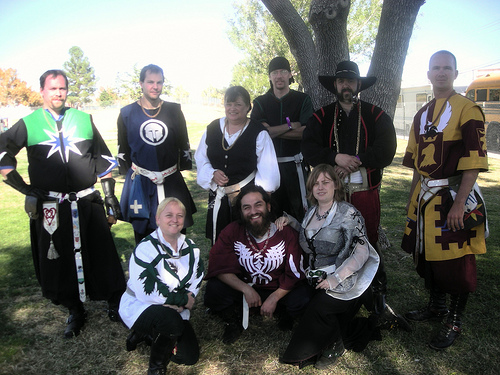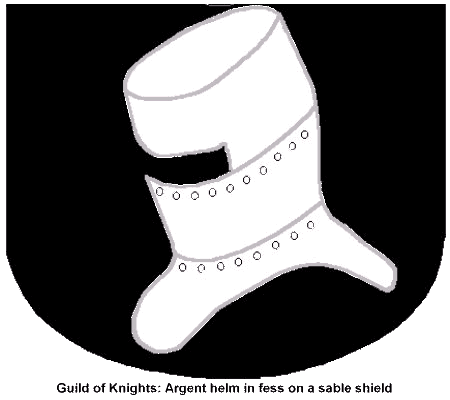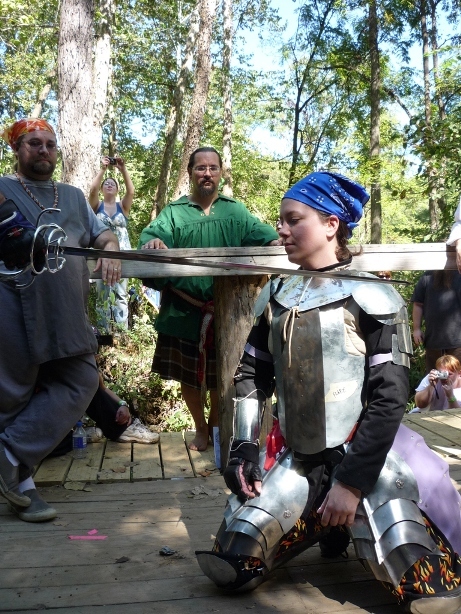Knight

N. An individual who has been inducted into at least one of the four orders of Knighthood.
Contents
Knighthood in the real world from Wikipedia
Knight is the English term for a social position originating in the Middle Ages. In Great Britain and the Dominions, knighthood is a non-heritable form of gentility, but is not nobility. In the High and Late Middle Ages, the principal duty of a knight was to fight as, and lead, heavy cavalry; more recently, knighthood has become a symbolic title of honor given to a more diverse class of people, from mountain climber Edmund Hillary to musician Paul McCartney. By extension, "knight" is also used as a translation of the names of other honorable estates connected with horsemanship, especially from classical antiquity.
The history of knighthood involves, therefore, the history of the social institution, which began somewhat differently in the various European regions; the history of the word, and the corresponding terms in French and Latin; and the history of the technology which made heavy cavalry possible.
Knighthood is designated by the title Sir (e.g. Sir Tom Jones) or Dame (e.g. Dame Judi Dench) within the Commonwealth of Nations. The French title "Chevalier" or the German "Ritter" are usually used in Continental Europe. Outside the Commonwealth, the title is respected but may carry less gravitas, and thus may or may not appear, for example, in the mass media and other publications. There are technically differing levels of knighthood, but in practice these are even more symbolic than the title itself today and thus only express the greatness of the recipient's achievements in the eyes of the Crown.
Knighthood in Amtgard
In Amtgard, even though the title of knight ranks low on the Order of Precedence, it is probably the most honored and sought after achievement in the game. Knighthood is not for everyone, and only some are elevated to that level. Even fewer achieve more than one belt, there are only a handful that have earned all four. Until the advent of Award standardization each kingdom had it's own traditions and requirements for an individual to be honored with the title of Knight. But after 2007 the recommended paths for knighthood were approved by all of the 13 kingdoms. Some local traditions still remain, the Wetlands, for instance, the power to grant knighthood rests not with the Monarch but with the Circle of Knights.
A listing of the first knights of each kingdom can be found here.
Excerpt from the Burning Lands Corpora
4.1 Knighthood:
- 4.11 The Monarch of a Kingdom may knight people into any of the four orders. Although not required, it is strongly suggested that candidates for Knighthood should meet the criteria set forth in the most current Award Standardization Process listed in the Rules of Play, and have the approval of a majority of the Knights of that order. Note that the achievement of criteria set forth does not automatically grant Knighthood. Also note that the traditional positive knightly virtues will go a long way towards achieving the white belt.
Four Orders of Knighthood
Knight of the Crown
Granted for outstanding leadership. In increasingly few Kingdoms, this Knighthood is awarded to every Kingdom level Monarch upon their stepping down, which has the unfortunate side effect of devaluing the respect some people give Crown Knights. Many Kingdoms now require multiple terms of service in high offices, as well as requiring candidates for Knight of the Crown to display excellent leadership skills.
See -Crown Knights
Knight of the Flame
Granted for outstanding service to the club. Traditional requirements for this Knighthood are Master Rose, Master Smith or Master Lion.
See-Flame Knights
Knight of the Serpent
Granted for accomplishments in the Arts and Sciences. Specific awards are divided amongst the Order of the Owl (for construction and scientific ventures), Order of the Dragon (for purely artistic avenues), and Order of the Garber (for hopefully superior garb, though sometimes it is merely for quantities therein.) To be knighted as a peer of the Serpent one should have achieved a Masterhood in one of these categories. Certain kingdoms add Master Order of the Hydra (given for Qualify for office at a Crown Quals) and Master Mask (for Role-playing and or acting) to the standard qualifications to become a Serpent Knight, but these are by no means the norm.
See-Serpent Knights
Knight of the Sword
Granted for excellence in fighting prowess, and often the candidate will have at least two out of the following three: Warlord, Weaponmaster, and Defender.
See-Sword Knights
Symbols of Knighthood
Knights are entitled to wear: Phoenix, a White Belt or Baldric, Spurs, and unadorned chains.
Responsibilities of Knighthood
A Knight may choose to take a Squire, or directly take one or more Man-at-Arms or Pages. While each Knight/Squire relationship is different, the Knight, by offering a squirehood, is offering the potential squire training and assistance on the road to knighthood. In some places, a knight may squire his/her self to another knight from a separate order, to receive training on that road. Also, some kingdoms limit the number of squires a knight may take (i.e. in Neverwinter, a knight may only take one squire per knighthood.) GV's rule (clarified through althing earlier this year) is that a Knight may take any number of Pages, is recommended to take only as many Squires as they have belts and a Noble is able to take MaA/WaA.
- To see a Complete (as we Can make it) listing of Knights everywhere see Peerage of Amtgard
Knightings
Knights take on different forms in all the kingdoms with different traditions being followed by all. The basic ceremony is largely the same.
Knightings usually occur at large events, a Coronation, Midreign Sometimes Quest during some type of Court. There are famous examples of this not taking place, i.e. Drakknar in the parking lot at Three A.M. however that is the exception to the rule. Most Kingdom's Knights are raised to their orders by the right of the Monarch, with the notable exception of the Wetlands where the power to knight rests only with the Circle.
The Monarch will call for the Guildmaster of Knights who will call the knights of Amtgard, which includes those knights visiting from other kingdoms. The Knights form an untidy arc, trying but failing to let the populous in on what's happening. The GMCoK will call for the Candidate. The Candidate kneels in front of the monarch, The Monarch gives a short speech about the person and why they have been called before the Circle. Then the monarch asks for the kingdom sword, which is usually carried by the Kingdom Champion. The Dubbing is accompanied by words that are almost always traditional to that kingdom, but almost always ending in 'Arise Sir/Dame Such and Such, Knight of the Bladdy-blah' Then the cheering, and The symbols of office and gifts are given to the new knight. In some Kingdoms the new knight is greeted by the circle with a Buffet Line (pronounced "Buff-IT"). Others, such as the Emerald Hills disagree with this practice.
Belt lines in Amtgard.
Because in the beginning there was only one knight, Peter la Grue; Because of this there was no knights circle in the early days of the Burning Lands. Then only another knight could make knights. So when you read the histories from that time where it mentions who squired whom, sometimes that actually means that the Knight literally gave Knighthood to the Squired party. This is especially true of Tawnee, Nashomi, Gilos, M'Deth and Heimdale. All of these were early monarchs of Amtgard, and whom ever they knighted became part of their knightly families.
Read more about Beltline and Knightly Families Here 'Founts'.
Links
- See the in their own words article about Real Knights for more information.
- The Seven Knightly Virtues
- Category; Knights
- Category;Beltline Templates

